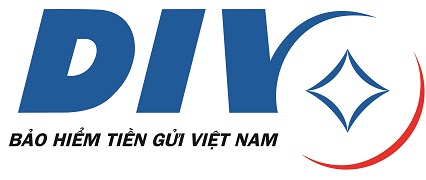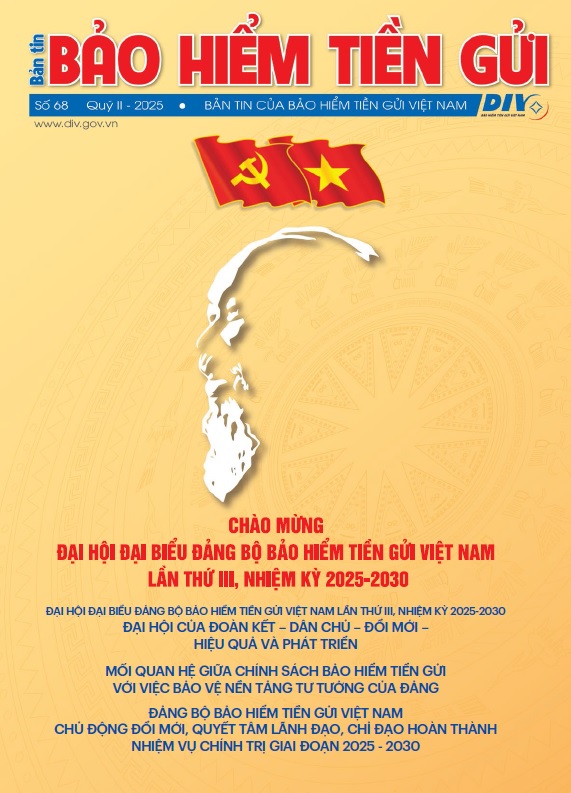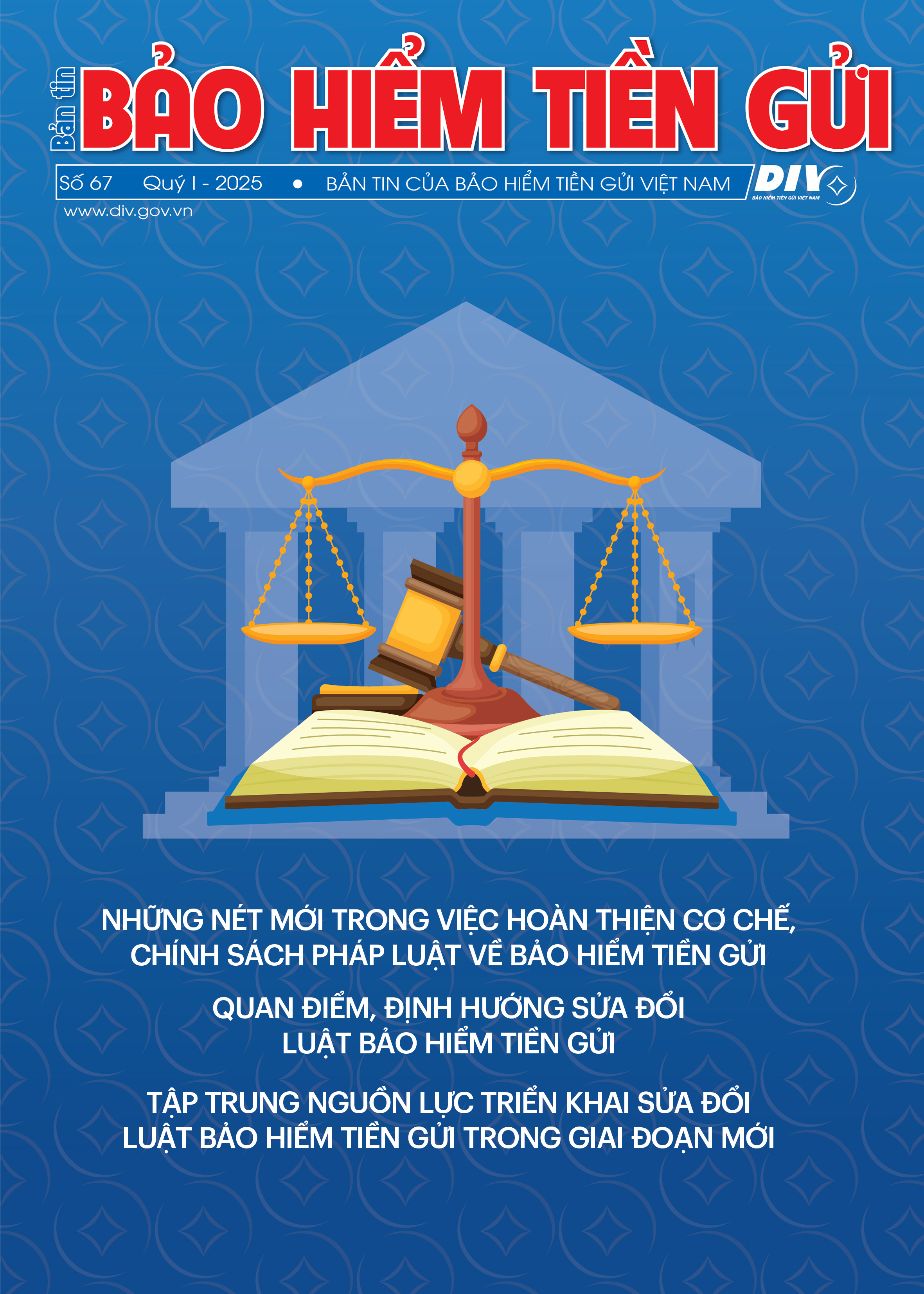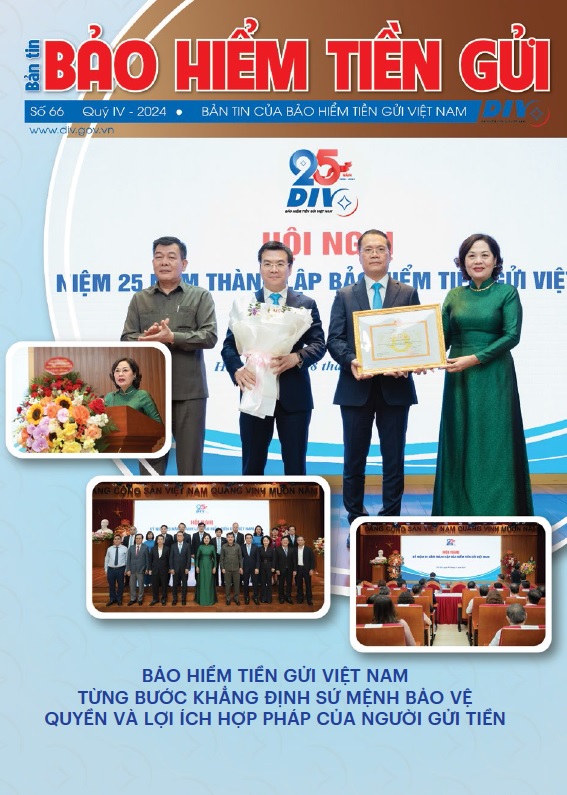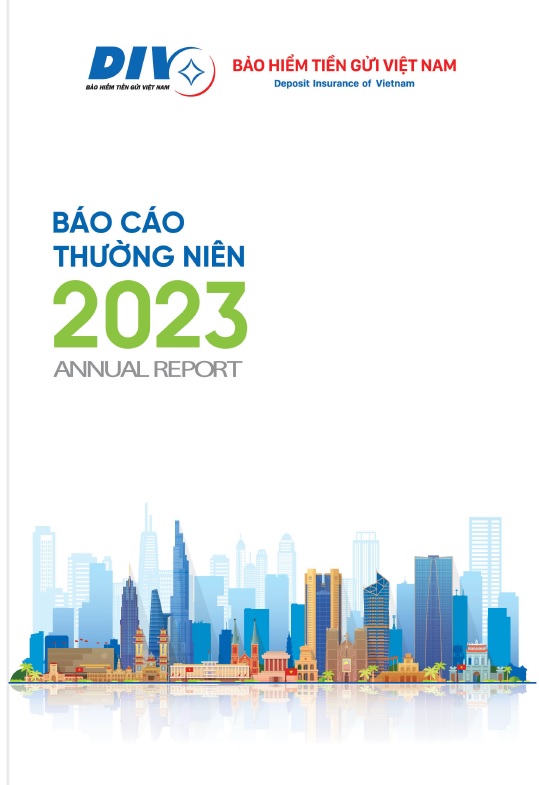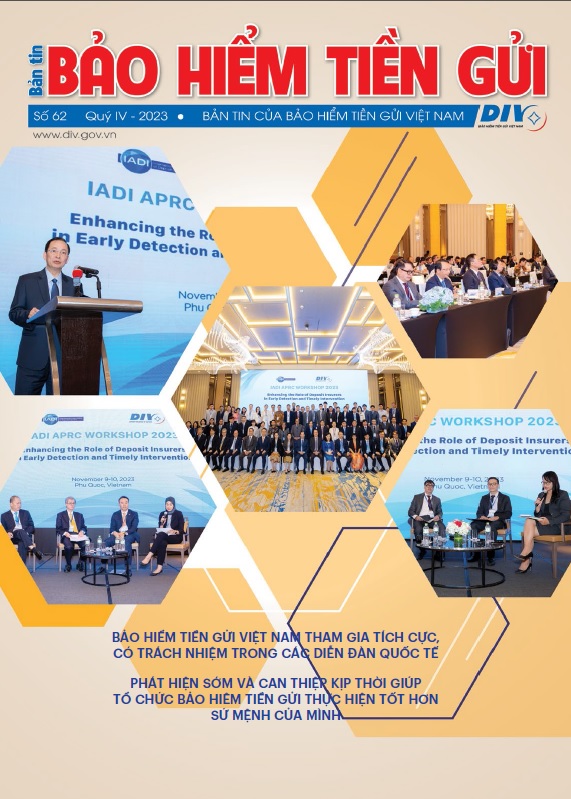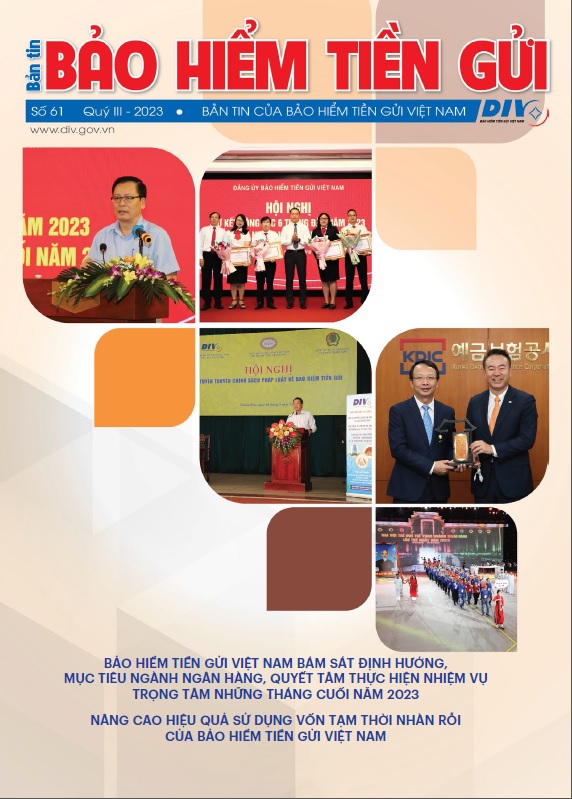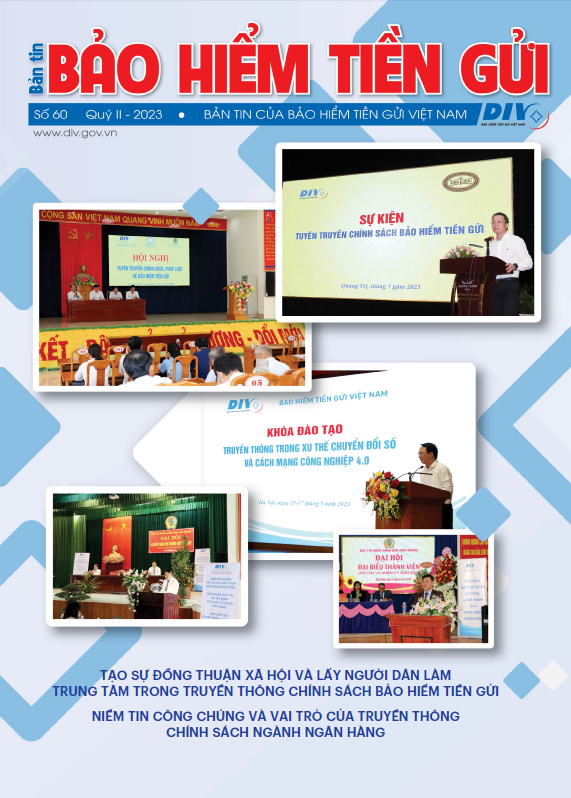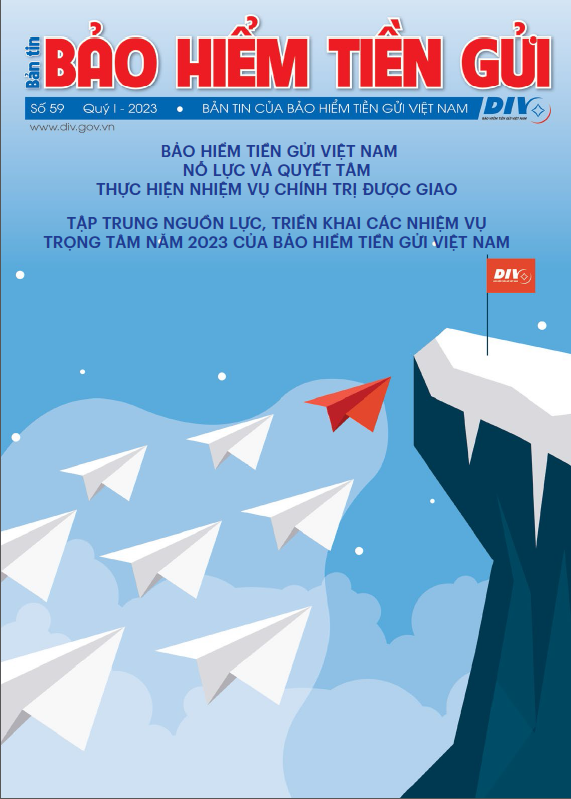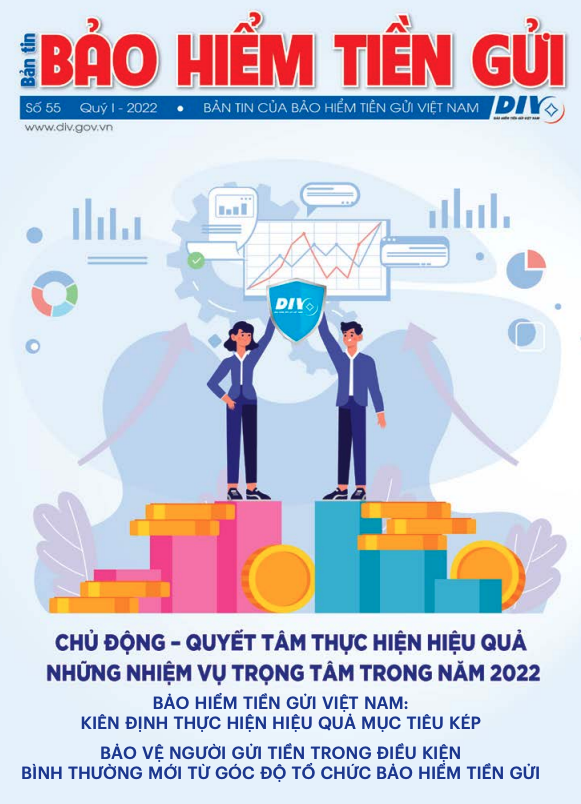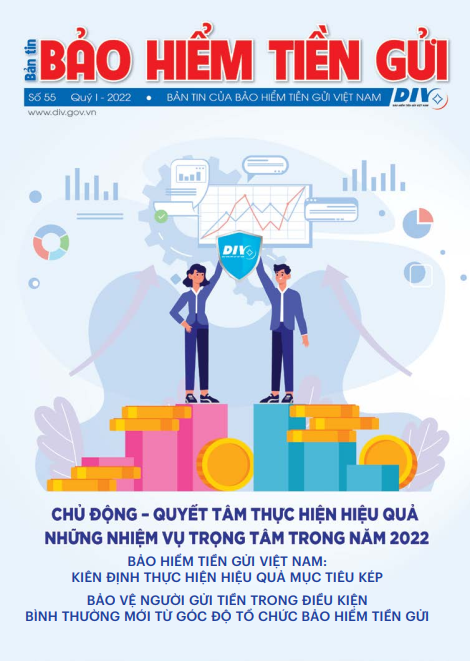The ratification of the Law on DI strengthens the role and position of Deposit Insurance institution in the financial safety net, protects the rights of depositors, contributes to the soundness of Vietnam’s banking system in the future and creates the basis for Deposit Insurance of Vietnam to prosper.
Objectives and principles of Deposit Insurance’s operation
The objectives of Deposit Insurance of Vietnam (DIV) have been stated in previous legal documents and repeatedly asserted in the Law on DI as “Deposit insurance aims to protect the legitimate rights and interests of depositors, to contribute to maintaining the stability of the system of credit institutions, and ensuring the safe and sound development of banking industry”. This article complies with IADI’s Core principles for effective deposit insurance system (Principle 1 – Public policy objectives) which emphasizes that public policy objectives must be clearly and officially stated in the highest legislative document.
The operational principle of deposit insurance upholds advantages from previous legal basis as it requires compulsory membership of all credit institutions, branches of foreign banks accepting individual deposits. This article is in line with Core principles (Principle 8 – Membership and Scope of deposit insurance) and is essential to mobilize resources to protect depositors in case of bank failure. Moreover, it facilitates the regular supervision of the insured institutions and guarantees the compliance of the insured institutions with legal regulations.
The operation of deposit insurance must be publicized and transparent in order to protect the legitimate rights of concerned parties. Unlike the Decree No.89 and No.109, The Law on DI separates this issue and describes it more clearly.
The insured subjects
With an aim to protecting the small and unsophisticated individuals and addressing the limitations of current regulations, the Law on DI no longer protects the deposits of households, corporative, private enterprises and partners because they are regularly rotated for payment rather than savings. In fact, over the last 10 years, deposits from these sources were not as big as individuals’, thus the Law on DI merely protects deposits of individuals.
The insured deposit
Compared with previous regulations, the Law on DI continues to protect deposits in Vietnamese dong of individuals in the form of various types; however, it no longer protects deposit of households, corporative, private enterprises and partners in the insured institutions.
The charter capital of uninsured depositors falls from 10% (Decree No.89 and No.109) to 5% which is consistent with the socio-economic circumstance as well as the changes in the size of capital of credit institutions.
Coverage limit
The Law on DI states that: “The Prime Minister shall set the coverage limit for each period of time on the basis of the proposal of the State Bank” because the coverage limit should be flexibly adjusted over the periods, especially during a crisis. The current coverage of 50 million VND as stated in Decree No.109 is inappropriate in the new socio-economic circumstance of Vietnam to protect depositors due to high inflation (an increase of 150% in the average price from 2005 to 2010) and rapid increase in GDP per capita (2.5 times higher than 2005’s). This, in return, requires the Government’s timely and appropriate adjustments in order to protect depositors and prevent any harm to the credit institutions.
Time of payment
The determination of the right date of payment reflects the Government’s commitments to guarantee the timely reimbursement of insured deposits in case of failure so as to reinforce the confidence of depositors in the banking system, prevent the bank run, and therefore, improve the liquidity and maintain the soundness of the banking system. In order to make it compatible with the objectives of deposit insurance and the Law on credit institutions, the Law on DI clarifies the date of payment as follows: “Insurance payment duty arises from the date when the State Bank, in writing, terminates the special control status of an insured institution or terminates the application of measures to rehabilitate solvency of the insured institution or does not apply these measures, and the insured institution is, however, still in bankruptcy; or when the State Bank identifies in writing that a foreign bank’s insured branch is incapable of paying deposits to depositors.” (Article 22)
Rights and obligations of insured depositors
This issue is newly stipulated in the Law on DI. The rights and obligations of insured depositors are not directly written in previous legal documents; however, they are stated in a separate article (Article 11). In more details, insured depositors are entrusted with the rights to be insured with deposits at insured institutions, to receive sufficient and timely insurance for insured deposits, to require insured institutions and the deposit insurance organization to provide adequate, accurate information regarding deposit insurance, to claim against, denounce or sue agencies, institutions and individuals involved in deposit insurance as legally stipulated, to be obligated to provide adequate, accurate information on deposits as required by insured institutions, and the deposit insurance organization upon receipt of payment for insured deposits.
Premium
In the meantime, Vietnam applies the flat-rate premium which equals to 0.15% of the average balance of insured deposits per year. The flat-rate premium merely works out at the early stage of the deposit insurance system due to the insufficient resources as the flat-rate premium system is easily calculated, managed and collected. However, the flat-rate premium triggers inequality, moral hazard and harms the competitiveness of the insured institutions in improving their performance in order to receive low premium. Against the background of banking system’s development in either quantity or quality, flat-rate premium is no longer appropriate.
The Law on DI indicates that “The Prime Minister shall set the frame of deposit insurance premiums on the basis of the proposal of the State Bank. Pursuant to the premium frame, the State Bank shall determine specific insurance premiums for insured institutions on the basis of assessment and classification of those insured institutions”. Like Decree No.89 and No.109, the new premium regulations create foundation for the implementing the risk-based premium in the future. They also comply with international trend of switching from the flat-rate to risk-based premium.
Organizational model and state management of deposit insurance institution
Substantially, the deposit insurance institution is a public financial institution operating in the field of finance-banking-insurance with an aim to ensuring the stability of the financial market in general and the banking activities in particular. In 1999, the Prime Minister established the deposit insurance of Vietnam as a State financial institution which separated from the organization of the State Bank of Vietnam, however, a specific Government agency in charge of State management of the DIV has not been assigned. As the result, so as to comply with the essence of the deposit insurance institution, current legislation and the legal status of the deposit insurance institution, the Law on DI states that the Government establishes the deposit insurance institution and also determines its functions and mandates (Article 29).
Nevertheless, to guarantee the relatively independent operation and performance of deposit insurance institution, the Law on DI stipulates that the State Bank of Viet Nam shall be responsible before the Government for state administration of deposit insurance (Clause 2, Article 8), clarifies the State Bank’s responsibilities for State administration of deposit insurance (Article 9) and The State Bank shall implement its function of inspection on deposit insurance. Besides, DIV will be placed under the State management in various fields of Ministry of Finance, Ministry of Labor, Invalids and Social affairs…
The operational model of deposit insurance institution
Along with the fully recognition of the deposit insurer’s functions including: supervision, examination and early detection, the Law on DI clarifies the rights of monitoring and examining the compliance with legal regulations on deposit insurance; making recommendations to the State Bank in dealing with actions violating legal regulations on deposit insurance (Clause 9, Article 13), collecting, analyzing and processing information on insured institutions in order to detect and report to the State Bank so that it can, in a timely manner, deal with violations of the prudential regulations on banking operations and risks causing insecurity to the banking system (Clause 10, Article 13). Moreover, the Law on DI allows the deposit insurance institution to participate in the process of special control over insured institutions as stipulated by the State Bank; to participate in the management and liquidation of assets of insured institutions as regulated by the Government (Clause 13, Article 13), therefore guarantees that DIV will successfully conduct its function of protecting depositors and determines the responsibilities of DIV to maintain the safety of the national financial monetary system.
Also, in order to carry out its function, the deposit insurer must be allowed to receive necessary information from the insured institutions. The Law on DI dedicates Chapter V to regulate the information and reporting regimes in which it clarifies the deposit insurer’s obligations in reporting and information disclosure, the SBV’s obligation to provide information.
With respect to the investment activities, the Law on DI merely allows that “The deposit insurance organization shall be entitled to use its temporarily idle capital to buy Government bonds, bills of the State Bank and deposit money with the State Bank”, therefore, the deposit insurance institution is unable to open accounts and deposit in State credit institutions as regulated by current legislation.
Rights and obligations of the deposit insurance institution
The arrival of the Law on DI is significant for the deposit insurer to enhance the legal status, creating basis for it to implement functions in compliance with the public policy’s objectives and the Core principles for developing effective deposit insurance system “The deposit insurer should be operationally independent, transparent, accountable and insulated from undue political and industry’s influence” (Principle 5, Core principles).
The Law on DI not only continues to include progressive contents from current legislation but also complies with international practices in protecting the independence of the deposit insurer, for example: (i) organization (established by the Government as a non-profit entity) (ii) finance (provided with charter capital, ensures the safety of its capital and covers its expenses by itself (iii) implementation of the functions and business (iv) take initiatives to reimburse depositors.
The Law on DI entitles the deposit insurer the functions and mandates which are consistent with the development of the financial sector and the current socio-economic circumstance in Vietnam. Apart from the responsibilities including: premium calculation and collection, reimbursement, asset management and liquidation, the deposit insurer is assigned to monitor, examine the compliance with legal regulations on deposit insurance, collect and process information to early detect and report to the SBV so that it can, in a timely manner, deal with violations of the prudential regulations on banking operations and risks causing insecurity to the banking system, to participate in the process of special control over insured institutions.
Relationships with supervisory agencies
The Law on DI provides principles for the cooperation between deposit insurer and the supervisory agencies. Accordingly, the Government shall exercise uniform state administration of deposit insurance, the State Bank of Viet Nam shall be responsible before the Government for state administration of deposit insurance, ministries and ministry-level agencies, within the scope of their respective duties and powers, shall be responsible for coordinating with the State Bank to implement state administration of deposit insurance, People’s Committees of all levels, within the scope of their respective duties and powers, shall be responsible for coordinating with state authorities to implement state administration of deposit insurance in their respective localities. However, to guarantee the implementation validity of the Law as well as the safe and sound banking sector, the relationships and cooperation mechanism among members of the financial safety net should be clarified in the by-laws and guidance documents.
The adoption of the Law on DI is a milestone in orienting the development of deposit insurance activities in Vietnam, creating legal conditions for the implementation of deposit insurance policy in the coming years. In order to bring the Law into life, concerned agencies should make the documents providing complete guidance for the implementation so as to protect the legitimate rights of depositors, contribute to the stability of credit institutions, and guarantee the safe and sound development of the banking industry.
